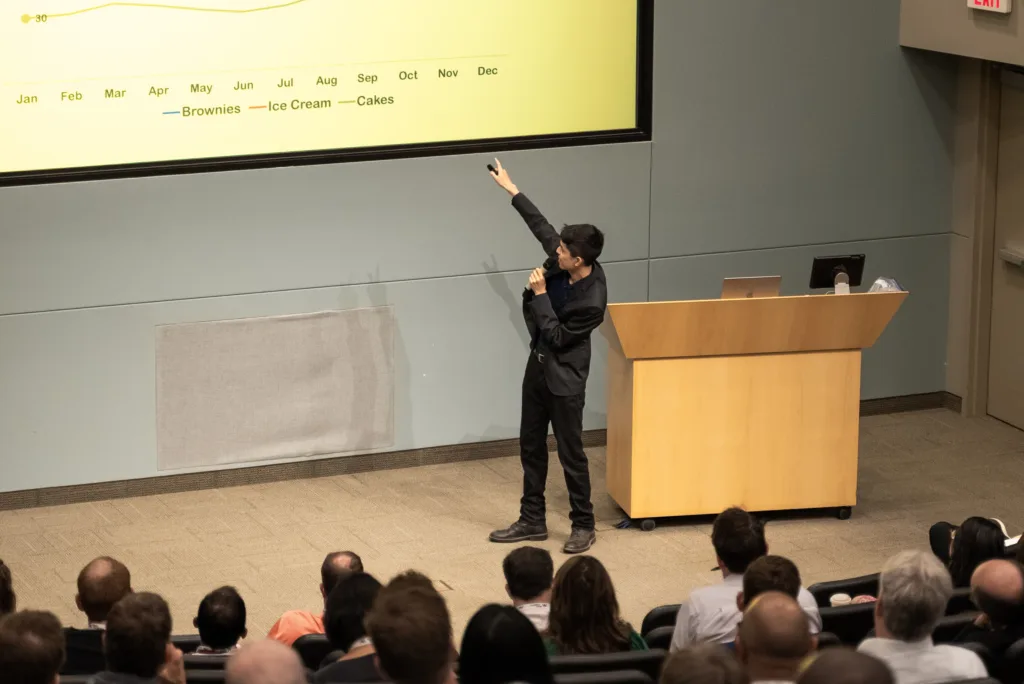Ever been in a business meeting and the conversation just goes downhill for no apparent reason?
Maybe…it’s you.
There was one time I was in an intake meeting, trying to ask a stakeholder what product they wanted my team to create. They kept giving short answers like:
- “No”
- “Maybe”
- “I don’t know”
I thought, “Maybe that’s just their personality…maybe they’re just having a bad day…”
But upon later reflection I realized it was me, and the questions I was asking them.
In this article I will overview the difference between closed vs open-ended questions, the pros/cons of each, and how to use both to properly direct the flow of business conversation.
What was the Problem?
The problem was I was consistently asking closed-ended questions. These are questions that typically start with:
- “Did you…[use a dashboard before?]”
- “Will you…[use data from the old database?]”
- “Are you…[migrating from the other cloud platform?]“
You notice that because of the way these sentences are constructed, the other person is constrained to respond with one or few-word answers. In this case, the only answers they could possibly provide are some variation of:
- “Yes”
- “No”
- “I don’t know”
And conversations die when these are the only answers people give…because they feel like interrogations.
Advantages of Open-Ended Questions
Open-ended questions, on the other hand, typically start with:
- “Why did…[you use a dashboard before?]”
- “What did…[you use as the data source?]
- “How did…[you migrate to the new cloud platform?]”
Notice that because of the way these sentences are constructed, the sentiment is curious and exploratory, encouraging the other person to give longer, more detailed answers than before. We’re not just getting quick facts from them in a transactional way, but diving deeper into their thought process.
For example, consider the third example which asks if the other person is migrating from another cloud platform:
- For the closed-ended question, they’d just say something like “Yes…[we are migrating from the other cloud platform]”.
- But to the open-ended question (that used “How did…” instead of “Are you…”) they’re encouraged to say something like, “We’re migrating to the cloud platform by doing X and Y, but having issues in that process with Z…”.
That’s fantastic information, positioning you to better understand their challenges and find a solution that fixes them!
Open-ended questions are therefore a fantastic tool if your goal is for someone to:
- Open up to you
- Establish rapport with you
- Share their experiences and feelings with you
Watch this video breakdown of closed vs open-ended questions:
Advantages of Closed-Ended Questions?
Considering all of those examples, are closed-ended questions always bad then?
No. As with any tool, it’s not bad in and of itself. It’s our responsibility to use the tool in the right way.
Consider the example of a non-technical stakeholder:
If you ask the open-ended question “Are you migrating to the new cloud platform?”
- They might say, “I’m not sure…I think so…”
(They have no idea what you’re talking about)
So you can switch to a closed-ended question for clarification:
- “Was your team using the Microsoft Azure cloud platform before?”
They will say “Yes” or “No” if they recognize that name
Then you can follow-up with another closed-ended question for more clarification:
- “Are you switching to Amazon’s AWS cloud platform as mandated by the CTO earlier this year?”
Once they say “Yes” or “No” you can then return to open-ended questions to better understand their thought process:
- “What kind of issues are you experiencing in that migration?”
Notice the difference:
Open-ended questions to understand. And closed-ended questions to quickly clarify.
To drive the distinction home, let’s imagine a conversation like a string, and the goal of the conversation is to create a knot:
- You start off with “open” loops because you need to create something to work with.
- In the same way, it’s great to start conversations off with open-ended questions to explore topics in an easy, unhindered way that builds trust.
- Eventually, though, you need to narrow the loop more and more to close and tighten it.
- A conversation will similarly go off the rails if questions are left too open (or aren’t well-understood). You can use closed-ended questions to pull the conversation back on track and gain clarity on the topics you want to discuss.
For more information on how to not only ask the right questions during meetings, but also listen effectively, read more here.
Summary
Open-ended and closed-ended questions both serve particular purposes in conversation.
Closed-ended questions can limit how the other person thinks about the topic and responds to you, if used constantly
Open-ended questions can encourage the other person to think more deeply about the subject matter and feel free to respond in a more detailed way, if used to discuss topics like feelings and explanations
Succinctly, open-ended questions are great for building understanding, while closed-ended questions are great for quickly gaining clarity
If you’re looking for further guidance on how to differentiate your communication skills and stand out in the workplace, reach out to me here.



